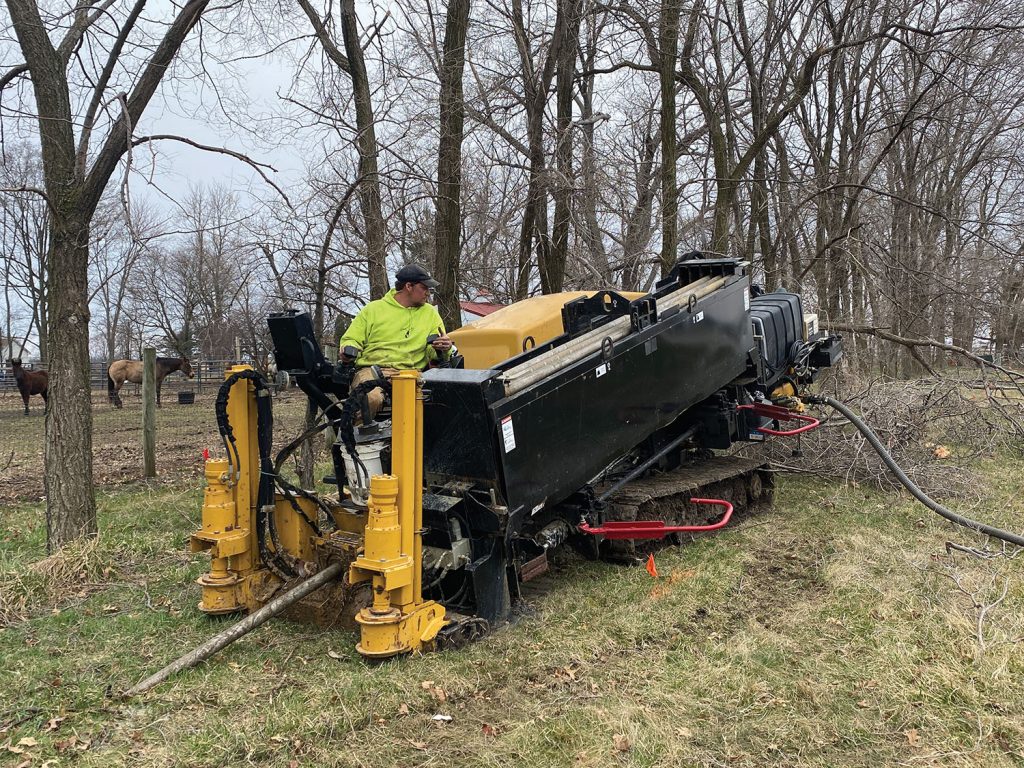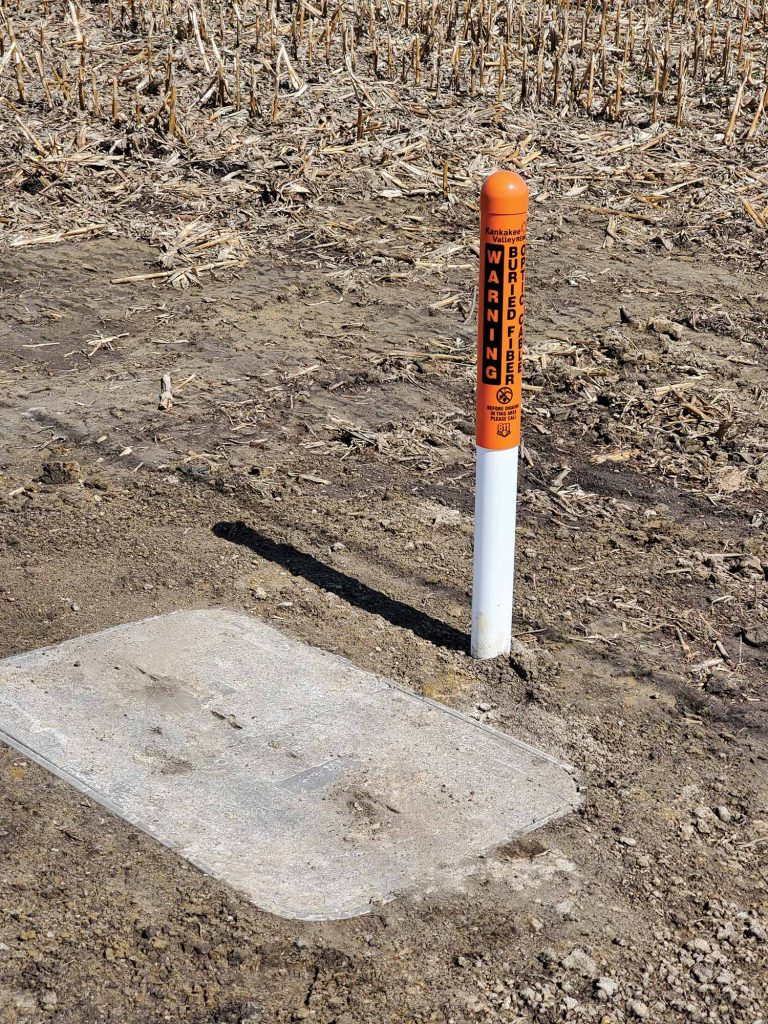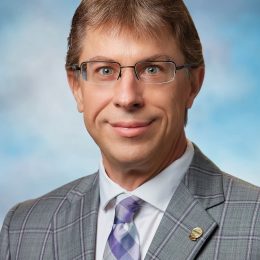
Capturing reliable data through fiber optics is the critical first step to a new era of opportunities for our membership, and we at Kankakee Valley REMC couldn’t be more excited about our fiber optic ring project which began at the start of the year and what it will mean for you.
The project provides a reliable high-speed backbone communication pathway between the co-op’s headquarters and our 12 electrical distribution substations. Our contractor placing buried and aerial fiber on the system, has made substantial headway on phase one of this three-phase project. Three miles of buried fiber and 30 miles of aerial fiber have already been installed. Yates Engineering is continuing to provide design work in preparation for additional fiber placement on the system.

yards and along roadways, serve as an access point for buried fiber.
As crews build the fiber ring, you may notice new equipment around your property. Most of the equipment is up high on our poles or buried in the ground, but tall orange and white structures might catch your attention. These are fiber route markers that serve as an access point for buried fiber. Though crews do their best not to damage the grass on your property when installing the equipment sometimes the grass might need to be re-seeded. Our crews are happy to take care of that for you.
While much of the fiber loop project is taking place outside, a lot is happening inside too.
Fiber is a new technology for KV REMC employees and the electrical industry. For this reason, cooperative employees are being trained about fiber and how to use it to its fullest capabilities. The operations team is learning how to safely triage downed fiber lines when a pole breaks due to weather or an accident. Our team of information technology professionals has mapped out ways to use fiber to enhance business operations.
When the fiber ring is deployed, we will be able to offer our member-consumers real-time data to help them make educated decisions related to their energy use. In addition the fiber ring will allow for us to improve the resilience of our distribution system through the use of smart grid technology. This infrastructure could also be used by an Internet service provider to offer broadband to our rural communities sometime down the line.
We look forward to providing more updates on this project on our website and Facebook. As always, please reach out to us if you have questions.



